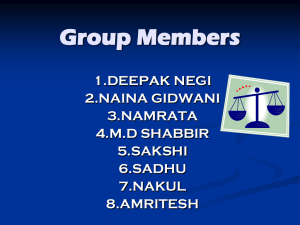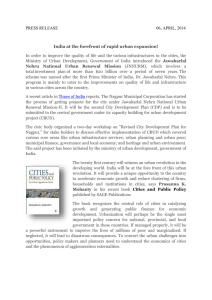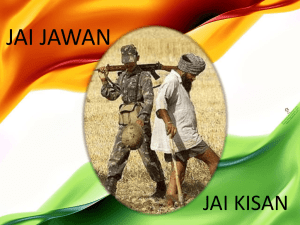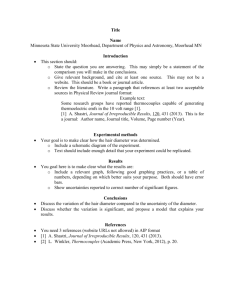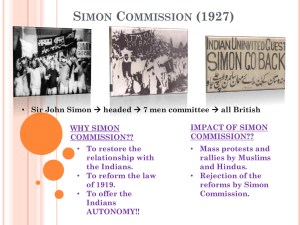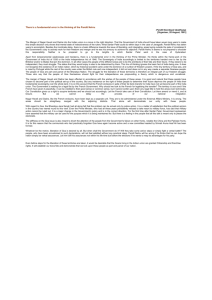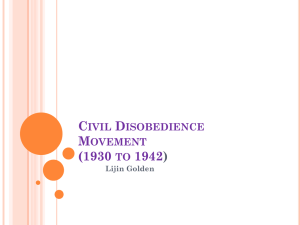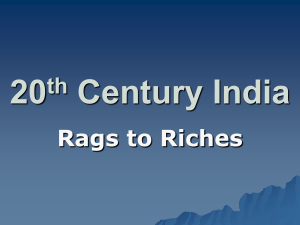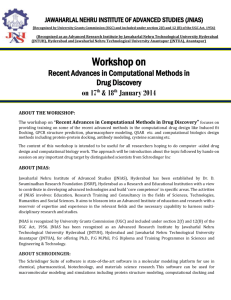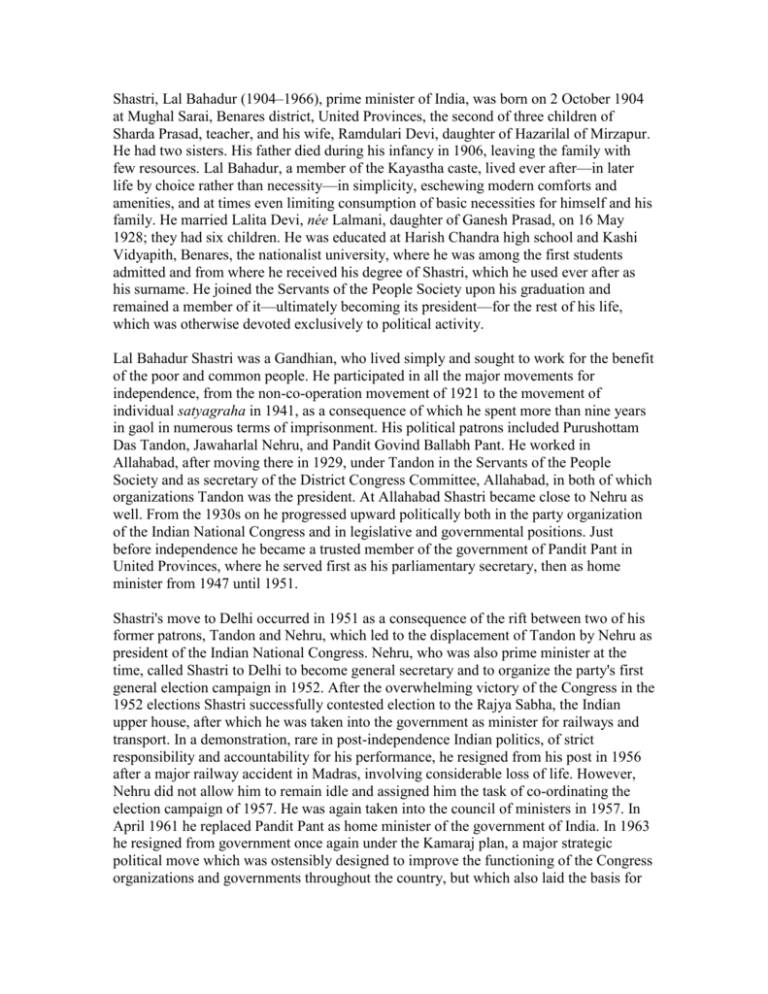
Shastri, Lal Bahadur (1904–1966), prime minister of India, was born on 2 October 1904
at Mughal Sarai, Benares district, United Provinces, the second of three children of
Sharda Prasad, teacher, and his wife, Ramdulari Devi, daughter of Hazarilal of Mirzapur.
He had two sisters. His father died during his infancy in 1906, leaving the family with
few resources. Lal Bahadur, a member of the Kayastha caste, lived ever after—in later
life by choice rather than necessity—in simplicity, eschewing modern comforts and
amenities, and at times even limiting consumption of basic necessities for himself and his
family. He married Lalita Devi, née Lalmani, daughter of Ganesh Prasad, on 16 May
1928; they had six children. He was educated at Harish Chandra high school and Kashi
Vidyapith, Benares, the nationalist university, where he was among the first students
admitted and from where he received his degree of Shastri, which he used ever after as
his surname. He joined the Servants of the People Society upon his graduation and
remained a member of it—ultimately becoming its president—for the rest of his life,
which was otherwise devoted exclusively to political activity.
Lal Bahadur Shastri was a Gandhian, who lived simply and sought to work for the benefit
of the poor and common people. He participated in all the major movements for
independence, from the non-co-operation movement of 1921 to the movement of
individual satyagraha in 1941, as a consequence of which he spent more than nine years
in gaol in numerous terms of imprisonment. His political patrons included Purushottam
Das Tandon, Jawaharlal Nehru, and Pandit Govind Ballabh Pant. He worked in
Allahabad, after moving there in 1929, under Tandon in the Servants of the People
Society and as secretary of the District Congress Committee, Allahabad, in both of which
organizations Tandon was the president. At Allahabad Shastri became close to Nehru as
well. From the 1930s on he progressed upward politically both in the party organization
of the Indian National Congress and in legislative and governmental positions. Just
before independence he became a trusted member of the government of Pandit Pant in
United Provinces, where he served first as his parliamentary secretary, then as home
minister from 1947 until 1951.
Shastri's move to Delhi occurred in 1951 as a consequence of the rift between two of his
former patrons, Tandon and Nehru, which led to the displacement of Tandon by Nehru as
president of the Indian National Congress. Nehru, who was also prime minister at the
time, called Shastri to Delhi to become general secretary and to organize the party's first
general election campaign in 1952. After the overwhelming victory of the Congress in the
1952 elections Shastri successfully contested election to the Rajya Sabha, the Indian
upper house, after which he was taken into the government as minister for railways and
transport. In a demonstration, rare in post-independence Indian politics, of strict
responsibility and accountability for his performance, he resigned from his post in 1956
after a major railway accident in Madras, involving considerable loss of life. However,
Nehru did not allow him to remain idle and assigned him the task of co-ordinating the
election campaign of 1957. He was again taken into the council of ministers in 1957. In
April 1961 he replaced Pandit Pant as home minister of the government of India. In 1963
he resigned from government once again under the Kamaraj plan, a major strategic
political move which was ostensibly designed to improve the functioning of the Congress
organizations and governments throughout the country, but which also laid the basis for
the succession to Pandit Nehru, who became gravely ill in January 1964.
Shortly after Nehru's stroke Shastri, Nehru's chosen heir, was called to rejoin the cabinet
as minister without portfolio. Upon Nehru's death he was selected unanimously, though
not without some discontent among rival contenders, as the second prime minister of
India. He was installed on 9 June 1964.
In his brief tenure as prime minister Shastri introduced economic policies in favour of
agriculture and private investment which deviated from those of Nehru. However, his
major contribution to Indian politics was as a ‘troubleshooter’ for others and a
peacemaker while in office, who worked to settle disputes in the party, the country, and
international relations in several crises concerning Assam, Punjab, Kashmir, the official
language issue, and relations between India and Ceylon, Nepal, and Pakistan. Ironically,
though peace and conciliation were his hallmarks, his greatest accomplishment is often
considered to be India's victory during his prime ministership in the Second IndoPakistan War. He died in Tashkent, Uzbekistan, on 11 January 1966, of heart failure, on
the evening after signing the peace agreement there restoring the status quo ante bellum.
Shastri, a Hindu, was cremated, the final irony being the naming of his cremation site, a
national memorial in Delhi, as Vijaya Ghat, commemorating India's victory in the war
against Pakistan. He was survived by his wife.
Paul R. Brass
Sources
D. R. Mankekar, Lal Bahadur Shastri (1973) · R. Prasad, Days with Lal Bahadur Shastri:
glimpses from the last seven years (1991) · M. Brecher, Nehru's mantle: the politics of
succession in India (1966) · K. C. Saxena and others, eds., Saga of Lal Bahadur Shastri
(1989) · Selected speeches of Lal Bahadur Shastri (June 11, 1964, to January 10, 1966)
(1974) · F. R. Frankel, India's political economy, 1947–1977: the gradual revolution
(1978)
Archives
FILM
BFI NFTVA, documentary footage · BFI NFTVA, news footage
Likenesses
photographs, 1964–5, Hult. Arch. · T. Fincher, photograph, 1965, Hult. Arch. [see illus.]
© Oxford University Press 2004–8
All rights reserved: see legal notice
Paul R. Brass, ‘Shastri, Lal Bahadur (1904–1966)’, Oxford
Dictionary of National Biography, Oxford University Press,
2004 [http://www.oxforddnb.com/view/article/47747,
accessed 22 Nov 2008]
Lal Bahadur Shastri (1904–1966): doi:10.1093/ref:odnb/47747
Back to top of biography

